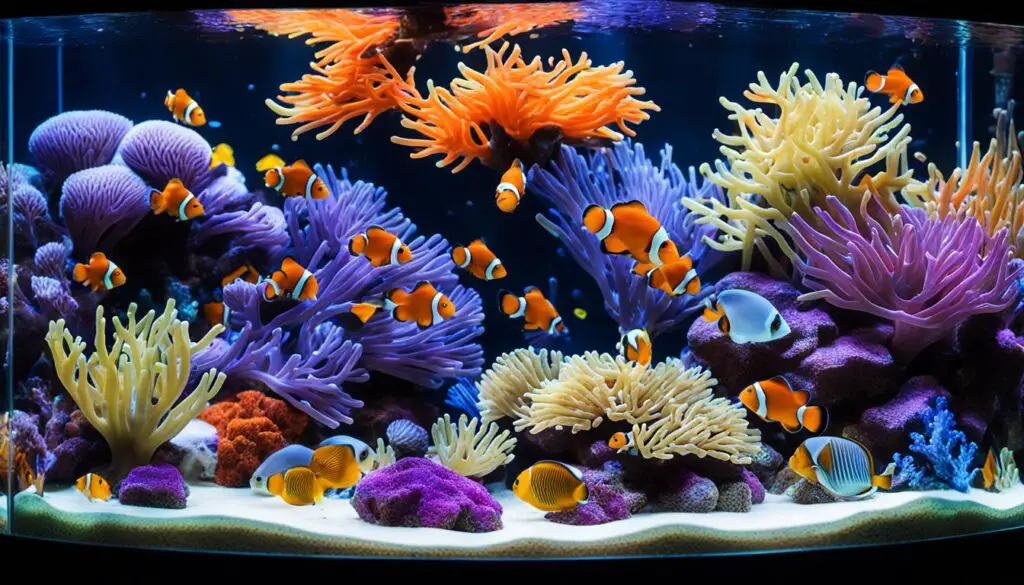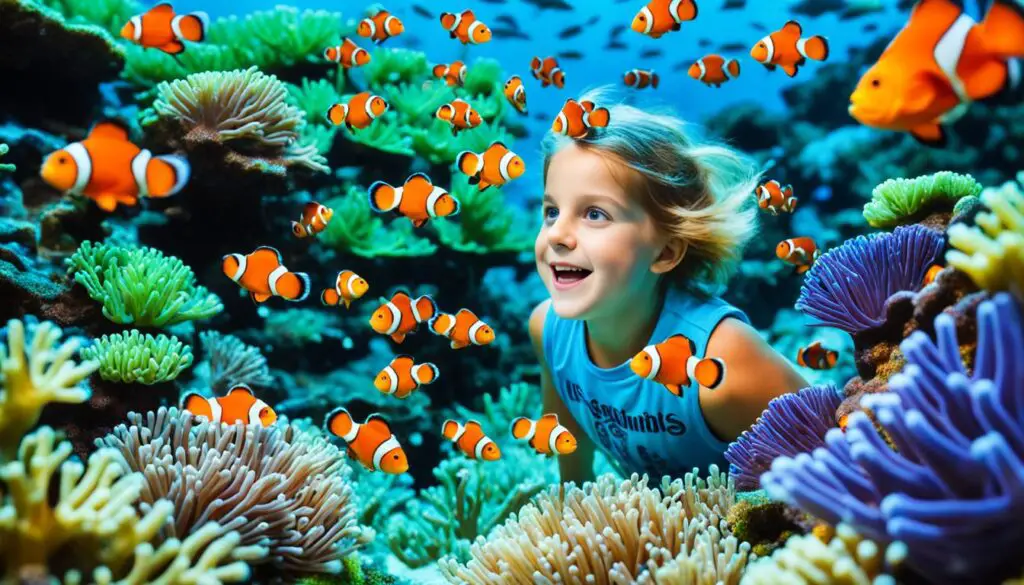Coral Reef Protection Programs: Action for the Reef: Essential Coral Reef Protection Programs!
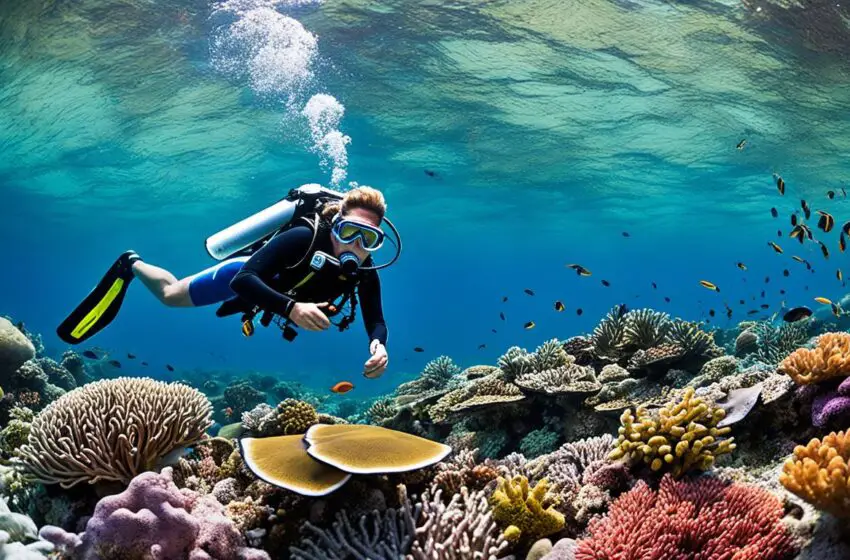
Coral reefs are critical ecosystems, offering important benefits to us. Yet, they face many dangers like pollution and climate change. Shockingly, more than 60% of the world’s reefs are under immediate threat. This is due to local harms. Additionally, if we add the risk of climate change, this number rises to 75%. In just the U.S., 22 types of corals are now endangered.
So, to save these vital parts of our planet, we must fight these risks. This means we need strong coral reef protection programs. These programs are key to our fight for their survival.
Key Takeaways:
- Coral reefs are valuable ecosystems facing numerous threats.
- Over 60% of the world’s reefs are under threat from local stressors.
- Climate change poses an additional risk to 75% of reefs when combined with other threats.
- In the U.S., 22 coral species are listed as threatened under the Endangered Species Act.
- Coral reef protection programs are essential for conservation and survival.
The NOAA Coral Reef Conservation Program: Protecting and Restoring Coral Reefs
The NOAA Coral Reef Conservation Program leads the fight to save and renew coral reefs in the USA. Since 2000, it has aimed to keep these critical environments safe for the coming generations. It focuses on four key areas to tackle the current challenges facing coral reefs.
Increasing Resilience to Climate Change
Climate change is a big threat to coral reefs. It makes the oceans warmer and often leads to coral bleaching. The program does research and uses new methods to resist the bad effects of such changes. Their goal is to help keep the reefs safe from climate harms.
Reducing Land-Based Sources of Pollution
Waste from land, like soil and too many nutrients, can hurt coral reefs. The program teams up with others to lower this kind of pollution. They teach and use proper land methods to save the ocean from getting dirty and hurting the reefs.
Improving Fisheries’ Sustainability
It’s important to fish in a way that doesn’t harm the coral reefs. The program works with fishers and others to do fishing that’s good for the reefs. They make plans based on science to fish sustainably, helping the reefs and the people who rely on them.
Restoring Viable Coral Populations
Having enough healthy corals is key for the reefs’ survival and bounce back. The program supports activities that plant new corals and fix their homes. By doing this, they help the reefs heal and become full of life again.
The NOAA Coral Reef Conservation Program teams up with many others. They join forces with states, schools, NGOs, and local groups. Together, they follow a broad plan to ensure coral reef health and future.
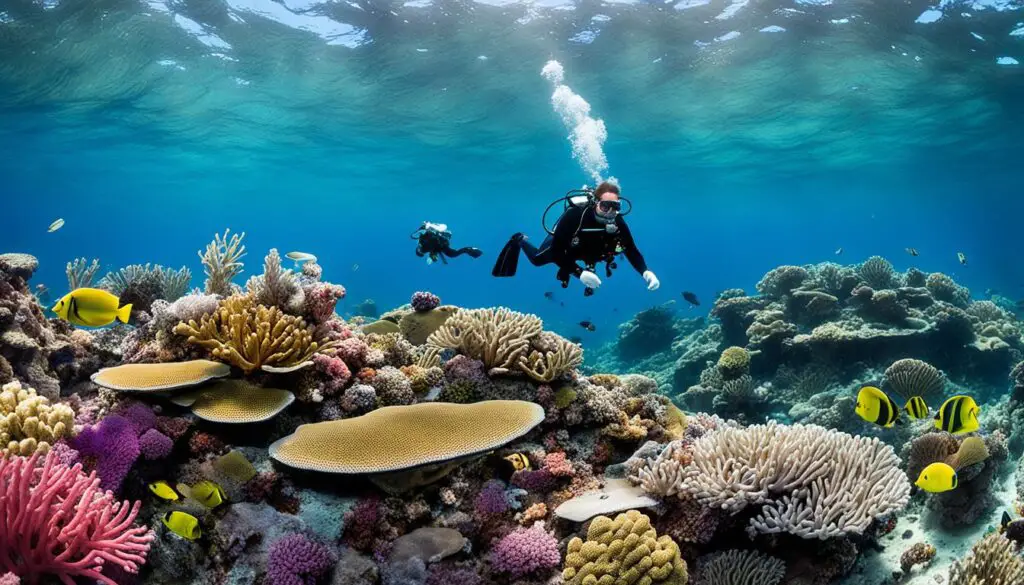
Table: Summary of Key Efforts by the NOAA Coral Reef Conservation Program
| Pillars of Work | Activities |
|---|---|
| Increasing resilience to climate change | – Research on coral bleaching and ocean acidification – Monitoring and assessment of coral reef health – Implementation of reef resilience strategies |
| Reducing land-based sources of pollution | – Development and promotion of best management practices for coastal development – Restoration of coastal habitats to improve water quality – Education and outreach on the impacts of land-based pollution |
| Improving fisheries’ sustainability | – Collaboration with fisheries managers to develop science-based management measures – Implementation of catch limits and gear restrictions to protect coral reef fish populations – Promoting sustainable fishing practices and community engagement |
| Restoring viable coral populations | – Coral propagation and outplanting initiatives – Habitat restoration projects to enhance reef structure and function – Research on coral reproduction and larval dynamics |
The U.S. Coral Reef Task Force: Coordinated Conservation Efforts
The U.S. Coral Reef Task Force was born from Executive Order 13089. It’s a team effort between the U.S. Department of Interior and the Department of Commerce. This Task Force is key in spreading good global practices for protecting coral reefs.
It acts as a hub for federal and local groups that work on protecting coral reef ecosystems. This set-up allows for easy sharing of ideas. This way, everyone works together smoothly to protect these vital areas.
“The U.S. Coral Reef Task Force drives coordinated conservation efforts, uniting various stakeholders in the shared goal of preserving and protecting coral reef ecosystems. By working together, we can make a meaningful impact on the long-term health and sustainability of these vital marine habitats.” – Secretary of the U.S. Department of Interior
More than just connecting people, the Task Force makes sure conservation plans happen. It supports these efforts with advice and quick response to new problems. The Task Force makes sure that the efforts put in are successful and last.
Promoting global impact:
The Task Force knows coral reefs matter all over the world. So, it works with others globally. Sharing the best tips and working together makes a big effect, not just in the U.S., but everywhere.
Driving innovation and research:
Moving coral reef science forward is a big focus for the Task Force. It helps fund and promote new studies. This way, everyone learns more about these special places. It also helps find new ways to protect them.
Image:
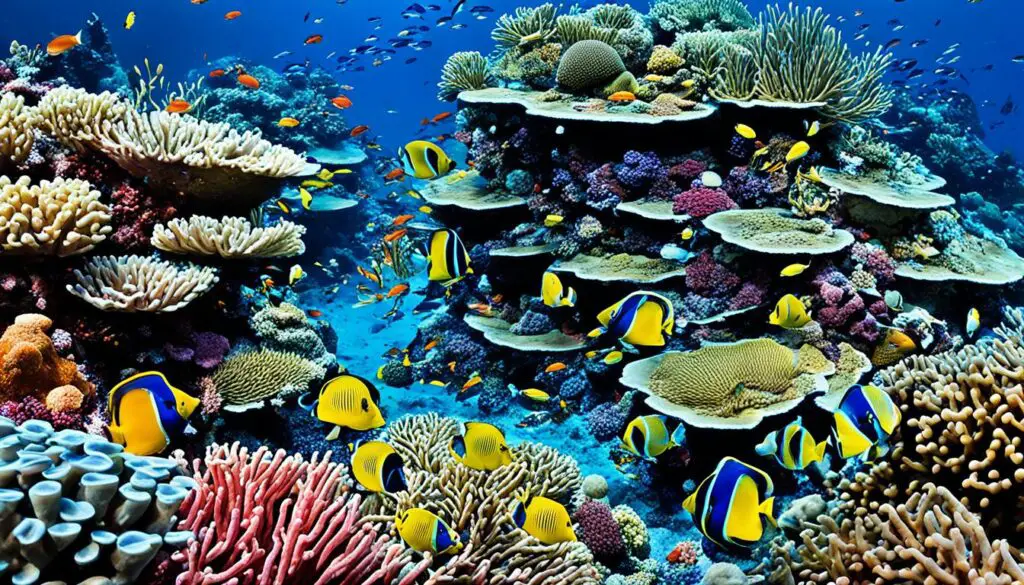
Conclusion: Safeguarding the Future of Coral Reefs
Programs to protect coral reefs are very important. Groups like the NOAA Coral Reef Conservation Program and the U.S. Coral Reef Task Force help a lot. They work on making reefs stronger against climate change, lowering pollution, supporting sustainable fishing, growing coral numbers, and other conservation efforts.
But, saving coral reefs needs everyone to work together. It’s key to protect these rich and vital areas for the future. With everyone’s help, we can save coral reefs for coming generations to see and use. We need to protect them for their beauty, their importance in nature, and for the resources they offer.
We must see it as our duty to keep coral reefs safe. Our actions can truly help these fragile places. By making their safety a top priority and using good protection methods, we can ensure a good and lasting future for coral reefs.
FAQ
What are coral reef protection programs?
Coral reef protection programs are steps to keep coral reefs safe for the long run. They use many methods. These include making them stronger against climate change, cutting pollution, bettering fishing rules, and adding more coral.
Why are coral reef protection programs necessary?
Coral reefs are both important and in danger. They bring money, culture, and life to many. But they are under attack from pollution, too much fishing, and the changing climate. Protecting them means securing the way of life for many species and people.
What is the NOAA Coral Reef Conservation Program?
In 2000, the NOAA Coral Reef Conservation Program started. It protects and heals coral reefs in the U.S. It works on making reefs cope better with climate change, cutting pollution, ensuring fishing is done right, and producing more coral.
What is the role of the U.S. Coral Reef Task Force?
The U.S. Coral Reef Task Force gathers groups to save U.S. coral reefs. It helps them join efforts wisely. It also advises on global conservation, checks efforts’ impacts, and makes sure plans and aid are carried out.
How do coral reef protection programs contribute to the future of coral reefs?
The NOAA program and Task Force work to secure corals’ future. They strive to make them stronger, cleaner, and more alive. This way, they aim to keep coral reefs flourishing for those ahead of us.


